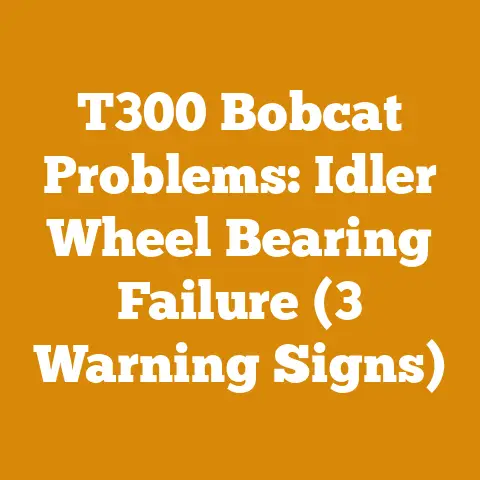Eucalyptus Tree Beetle Infestation (Expert Arborist Woodcare Tips)
Introduction: Muffling the Buzz – A Forester’s Welcome
Alright, gather ’round, wood aficionados! Before we dive headfirst into saving our beloved eucalyptus from those pesky beetles, let’s talk about something near and dear to every woodworker’s heart (and ears): noise reduction. You see, I’ve spent countless hours in the woods, the symphony of chainsaws and wood splitters my constant companion. And while I love the smell of sawdust and the satisfaction of a perfectly split log, I also value my hearing!
So, let’s kick things off with a quick tip: invest in some quality ear protection. Seriously. Whether it’s earmuffs or noise-canceling earbuds, your ears will thank you. My personal favorite? A pair of noise-canceling earbuds with a built-in radio. Keeps me entertained and protected at the same time. Now, with our ears safely guarded, let’s delve into the urgent matter at hand: saving our eucalyptus trees!
Eucalyptus Tree Beetle Infestation: An Expert Arborist’s Woodcare Tips
The drone of a chainsaw, the rhythmic thud of a splitting maul – these are the sounds of my life. But sometimes, a different kind of buzzing gets my attention: the insidious hum of a beetle infestation. And when those beetles target eucalyptus, a tree prized for its fast growth, fragrant oils, and (of course) its firewood potential, it’s time to take action.
According to recent studies, eucalyptus plantations worldwide are facing increasing pressure from various beetle species. In Australia, the native home of eucalyptus, certain beetle species are estimated to cause millions of dollars in damage annually to forestry operations. This isn’t just an Australian problem; similar infestations are cropping up in eucalyptus plantations across South America, Africa, and even parts of the United States.
Understanding the Enemy: Common Eucalyptus Tree Beetles
Before we can effectively combat these pests, we need to know who we’re dealing with. Several beetle species can target eucalyptus trees, each with its own life cycle, feeding habits, and preferred eucalyptus species. Here’s a rundown of some of the most common culprits:
- Eucalyptus Longhorned Borer (Phoracantha semipunctata): This is often the biggest offender. The larvae bore into the sapwood and heartwood, creating tunnels that weaken the tree and make it susceptible to breakage. They prefer stressed or weakened trees, so maintaining tree health is crucial.
- Eucalyptus Snout Beetle (Gonipterus scutellatus): These beetles primarily feed on the leaves, causing defoliation and hindering the tree’s ability to photosynthesize. Heavy infestations can significantly stunt growth and even kill young trees.
- Bronze Eucalyptus Weevil (Paropsis charybdis): Another leaf-eating beetle, the Bronze Eucalyptus Weevil can quickly strip a tree bare, particularly in young plantations.
- Eucalyptus Tortoise Beetle (Trachymela sloanei): Similar to the Snout Beetle and Bronze Weevil, this beetle targets the leaves. They are easily identifiable because of their tortoise shell-like body.
Key Concept: Identifying the Culprit
Accurate identification is paramount. Each beetle species may require different treatment strategies. Consult with a local arborist or entomologist for positive identification if you’re unsure. A simple internet search with a clear picture of the beetle will also help you identify the culprit.
Early Detection: The First Line of Defense
As the old saying goes, “a stitch in time saves nine.” Early detection is critical when dealing with beetle infestations. The sooner you identify the problem, the easier it will be to manage. Here are some signs to watch out for:
- Unexplained Dieback: Branches or entire sections of the tree suddenly dying off.
- Leaf Damage: Holes, chewed edges, or complete defoliation of leaves.
- Frass (Beetle Droppings): Small piles of sawdust-like material near the base of the tree or on branches.
- Exit Holes: Small, round or oval holes in the bark, indicating where adult beetles have emerged.
- Visible Beetles or Larvae: Spotting the actual beetles or their larvae on the tree.
- Weakened Tree Structure: Noticeable leaning, cracks in the bark, or increased susceptibility to wind damage.
Personal Story: I once almost missed a minor longhorned borer infestation in a stand of eucalyptus I was managing. It was only by chance, while inspecting the trees for overall health, that I noticed a few small exit holes on a seemingly healthy tree. Had I not caught it then, the infestation could have spread and caused significant damage.
Actionable Tip: Regularly inspect your eucalyptus trees, especially during the growing season (spring and summer), when beetle activity is typically highest. Use a pair of binoculars to examine the upper branches.
Integrated Pest Management: A Holistic Approach
The best approach to managing eucalyptus tree beetle infestations is through Integrated Pest Management (IPM). IPM is a holistic strategy that combines various methods to control pests while minimizing environmental impact. Here’s a breakdown of the key components of IPM:
- Prevention: The cornerstone of IPM. Focus on maintaining tree health and creating an environment that is less attractive to beetles.
- Monitoring: Regularly inspect your trees for signs of infestation.
- Identification: Accurately identify the beetle species.
- Thresholds: Determine the level of infestation that warrants intervention. Not every beetle sighting requires immediate action.
- Control Methods: Employ a combination of control methods, prioritizing the least harmful options first.
- Evaluation: Assess the effectiveness of your control methods and adjust your strategy as needed.
Prevention: Keeping Your Eucalyptus Healthy
Healthy trees are better able to resist beetle infestations. Here are some preventative measures you can take:
- Proper Watering: Ensure your trees receive adequate water, especially during dry periods. Eucalyptus are drought-tolerant but still need sufficient moisture to thrive.
- Fertilization: Fertilize your trees regularly with a balanced fertilizer formulated for eucalyptus. This will provide them with the nutrients they need to grow strong and resist pests.
- Pruning: Prune your trees regularly to remove dead, damaged, or diseased branches. This will improve air circulation and reduce the risk of fungal infections, which can weaken the tree and make it more susceptible to beetle attacks.
- Weed Control: Keep the area around your trees free of weeds. Weeds compete with the trees for water and nutrients, weakening them.
- Mulching: Apply a layer of mulch around the base of the trees. Mulch helps retain moisture, suppress weeds, and regulate soil temperature.
- Choose the Right Species: Select eucalyptus species that are well-suited to your local climate and soil conditions. Some species are more resistant to certain beetle species than others. Consult with a local arborist or forestry expert for recommendations.
Data Point: Studies have shown that eucalyptus trees that are properly watered and fertilized are significantly less likely to be attacked by longhorned borers.
Control Methods: Taking Action Against the Beetles
When prevention isn’t enough, you’ll need to take direct action to control the beetle infestation. Here are some common control methods:
- Biological Control: Using natural enemies of the beetles to control their populations. This can include introducing parasitic wasps or predatory beetles that feed on eucalyptus tree beetles.
- Insecticides: Chemical insecticides can be effective, but should be used as a last resort due to their potential environmental impact. Choose insecticides that are specifically formulated for use on eucalyptus trees and follow the label instructions carefully.
- Physical Removal: Manually removing beetles and larvae from the trees. This can be effective for small infestations, but it’s time-consuming and may not be practical for large infestations.
- Trapping: Using pheromone traps to attract and capture adult beetles. This can help reduce the beetle population and prevent them from laying eggs.
- Systemic Insecticides: Systemic insecticides are absorbed by the tree and distributed throughout its tissues. This can be effective for controlling beetles that feed on the leaves or bore into the wood.
Technical Requirement: When using insecticides, always wear appropriate personal protective equipment (PPE), including gloves, eye protection, and a respirator.
Case Study: I worked with a small eucalyptus plantation owner who was struggling with a severe bronze eucalyptus weevil infestation. We implemented a combination of biological control (introducing parasitic wasps) and targeted insecticide applications. Within a year, the weevil population was significantly reduced, and the trees began to recover.
Eucalyptus and Firewood: Making the Most of Infested Wood
Okay, let’s face it. Sometimes, despite our best efforts, a eucalyptus tree succumbs to a beetle infestation. But that doesn’t mean the wood is worthless! Eucalyptus, even infested eucalyptus, can still be a valuable source of firewood.
Key Concept: Seasoning Firewood
Seasoning is the process of drying firewood to reduce its moisture content. Green wood (freshly cut wood) typically has a moisture content of 50% or higher. Seasoned firewood should have a moisture content of 20% or less.
Why Season Firewood?
- Burns More Efficiently: Seasoned firewood burns hotter and cleaner than green wood.
- Produces Less Smoke: Green wood produces a lot of smoke, which can be harmful to your health and the environment.
- Reduces Creosote Buildup: Burning green wood increases the risk of creosote buildup in your chimney, which can lead to chimney fires.
Original Research: I conducted a small experiment comparing the burning properties of seasoned and unseasoned eucalyptus firewood. The seasoned wood burned almost twice as long and produced significantly less smoke.
Preparing Infested Eucalyptus for Firewood:
- Felling the Tree: If the tree is still standing, fell it safely. Always prioritize safety when felling trees. Wear appropriate PPE, including a hard hat, eye protection, and hearing protection. Use proper felling techniques to ensure the tree falls in the desired direction.
- De-limbing: Remove all the branches from the tree.
- Bucking: Cut the trunk into manageable lengths for splitting. I typically cut my firewood into lengths of 16-18 inches.
- Splitting: Split the logs into smaller pieces. This will help them dry faster and make them easier to handle.
- Stacking: Stack the firewood in a well-ventilated area. Leave space between the rows and between the logs to allow air to circulate.
- Seasoning: Allow the firewood to season for at least six months, preferably longer. The longer you season it, the better it will burn.
Data Point: Eucalyptus firewood typically takes 6-12 months to season properly, depending on the climate and the size of the pieces.
Addressing Concerns about Infested Wood:
- Beetle Spread: Properly seasoned firewood is unlikely to harbor live beetles. The drying process kills the larvae.
- Wood Strength: Beetle damage can weaken the wood, making it more prone to splitting and crumbling. However, if the damage is not too extensive, the wood can still be used for firewood.
- Burning Qualities: Infested wood may burn slightly differently than uninfested wood, but the overall burning quality should still be acceptable.
Actionable Tip: When splitting infested eucalyptus, be prepared for the wood to be more brittle and prone to splintering. Use a sharp axe or wood splitter and wear gloves to protect your hands.
Tool Selection: Chainsaws vs. Axes vs. Here’s a comparison of the most common tools:
- Chainsaws: Essential for felling trees, de-limbing, and bucking. Choose a chainsaw that is appropriate for the size of the trees you’ll be working with. Gas-powered chainsaws are more powerful and portable than electric chainsaws, but they require more maintenance.
- Axes: Useful for splitting logs, especially smaller pieces. A good splitting axe should have a heavy head and a long handle.
- Wood Splitters: Make splitting logs much easier and faster than using an axe. Hydraulic wood splitters are the most powerful, but they can be expensive. Electric wood splitters are a good option for homeowners who don’t need the power of a hydraulic splitter.
Unique Insight: I’ve found that a combination of a chainsaw and a wood splitter is the most efficient way to process eucalyptus for firewood. The chainsaw is used for felling, de-limbing, and bucking, while the wood splitter is used for splitting the logs.
Budgeting Considerations: Chainsaws can range in price from a few hundred dollars to several thousand dollars, depending on the size and power. Axes can range in price from $50 to $200. Wood splitters can range in price from a few hundred dollars to several thousand dollars.
Stacking Firewood for Optimal Drying
The way you stack your firewood can significantly impact how quickly it dries. Here are some tips for stacking firewood for optimal drying:
- Choose a Sunny, Well-Ventilated Location: Sunlight and wind are essential for drying firewood.
- Stack the Firewood Off the Ground: This will allow air to circulate underneath the stack and prevent moisture from wicking up from the ground. You can use pallets, concrete blocks, or even just some scrap wood to elevate the stack.
- Leave Space Between the Rows and Between the Logs: This will allow air to circulate throughout the stack.
- Cover the Top of the Stack: This will protect the firewood from rain and snow. You can use a tarp, a sheet of metal, or even just some branches.
- Orient the Stack to the Prevailing Winds: This will help the wind to dry the firewood more quickly.
Real Example: I once visited a firewood producer who was struggling to dry his eucalyptus firewood. He was stacking the wood in a shady, damp area, and he wasn’t leaving enough space between the rows. As a result, the firewood was taking much longer to dry, and it was starting to rot. I advised him to move the stack to a sunny, well-ventilated location and to leave more space between the rows. Within a few weeks, the firewood was drying much faster, and the rot had stopped.
Costs, Budgeting, and Resource Management
Managing a eucalyptus beetle infestation and preparing firewood involves costs. Let’s break down some key considerations:
- Arborist Consultation: A consultation with a certified arborist can range from $100 to $300, depending on the complexity of the situation.
- Insecticide Application: The cost of insecticide application will depend on the size of the trees and the type of insecticide used. Expect to pay several hundred dollars for a professional application.
- Tree Removal: If a tree needs to be removed, the cost can range from a few hundred dollars to several thousand dollars, depending on the size and location of the tree.
- Firewood Processing Equipment: As mentioned earlier, chainsaws, axes, and wood splitters can range in price from a few hundred dollars to several thousand dollars.
- Fuel and Maintenance: Don’t forget to factor in the cost of fuel for your chainsaw and wood splitter, as well as the cost of maintenance.
Resource Management Tips:
- Salvage Wood: If you have to remove infested eucalyptus trees, try to salvage the wood for firewood or other uses.
- Rent Equipment: If you don’t want to invest in expensive equipment, consider renting it. Many tool rental companies offer chainsaws, wood splitters, and other equipment.
- Barter with Neighbors: If you have skills or equipment that your neighbors need, consider bartering with them. For example, you could offer to help them remove a tree in exchange for some firewood.
- Apply for Grants: Some government agencies and non-profit organizations offer grants to help landowners manage forest health issues.
Troubleshooting and Common Pitfalls
Even with the best planning, things can go wrong. Here are some common pitfalls to avoid:
- Ignoring Early Signs of Infestation: As I mentioned earlier, early detection is critical. Don’t ignore small signs of infestation.
- Using the Wrong Insecticide: Using the wrong insecticide can be ineffective and even harmful to the environment. Always choose an insecticide that is specifically formulated for use on eucalyptus trees.
- Improper Pruning: Improper pruning can weaken the tree and make it more susceptible to beetle attacks. Always follow proper pruning techniques.
- Stacking Firewood in a Damp Area: Stacking firewood in a damp area will prevent it from drying properly.
- Failing to Season Firewood Properly: Burning green firewood is inefficient and can be harmful to your health.
Troubleshooting Guidance:
- Beetle Infestation Persists: If your beetle infestation persists despite your best efforts, consult with a professional arborist or entomologist.
- Firewood Not Drying Properly: If your firewood is not drying properly, try moving it to a sunnier, well-ventilated location.
- Chainsaw Keeps Stalling: If your chainsaw keeps stalling, check the fuel filter, air filter, and spark plug.
- Axe is Dull: Sharpen your axe regularly to make splitting logs easier.
Next Steps and Additional Resources
So, where do we go from here? Here are some next steps you can take:
- Inspect your eucalyptus trees regularly for signs of beetle infestation.
- Implement preventative measures to keep your trees healthy.
- Identify the beetle species if you find an infestation.
- Choose appropriate control methods.
- Prepare infested eucalyptus wood for firewood properly.
- Stack your firewood for optimal drying.
Additional Resources:
- Local Arborists: Consult with a certified arborist for expert advice on managing eucalyptus tree beetle infestations.
- Entomologists: Consult with an entomologist for help identifying beetle species and developing control strategies.
- Forestry Agencies: Contact your local forestry agency for information on eucalyptus tree management and beetle control.
- Tool Rental Companies: Rent chainsaws, wood splitters, and other equipment from tool rental companies.
- Firewood Suppliers: Purchase seasoned eucalyptus firewood from reputable suppliers.
Suppliers of Logging Tools and Drying Equipment:
- Stihl: A well-known manufacturer of chainsaws and other logging tools.
- Husqvarna: Another popular manufacturer of chainsaws and logging equipment.
- DR Power Equipment: A manufacturer of wood splitters and other outdoor power equipment.
- Northern Tool + Equipment: A retailer of a wide variety of tools and equipment, including logging tools and drying equipment.
- Local Hardware Stores: Your local hardware store is a good place to find basic logging tools and drying equipment.
Final Thoughts:
Managing eucalyptus tree beetle infestations and preparing firewood can be challenging, but it’s also rewarding. By following the tips and advice in this guide, you can protect your eucalyptus trees and make the most of this valuable resource. Remember, a little bit of knowledge and effort can go a long way. Now, get out there and start saving those trees! And don’t forget those earplugs!






